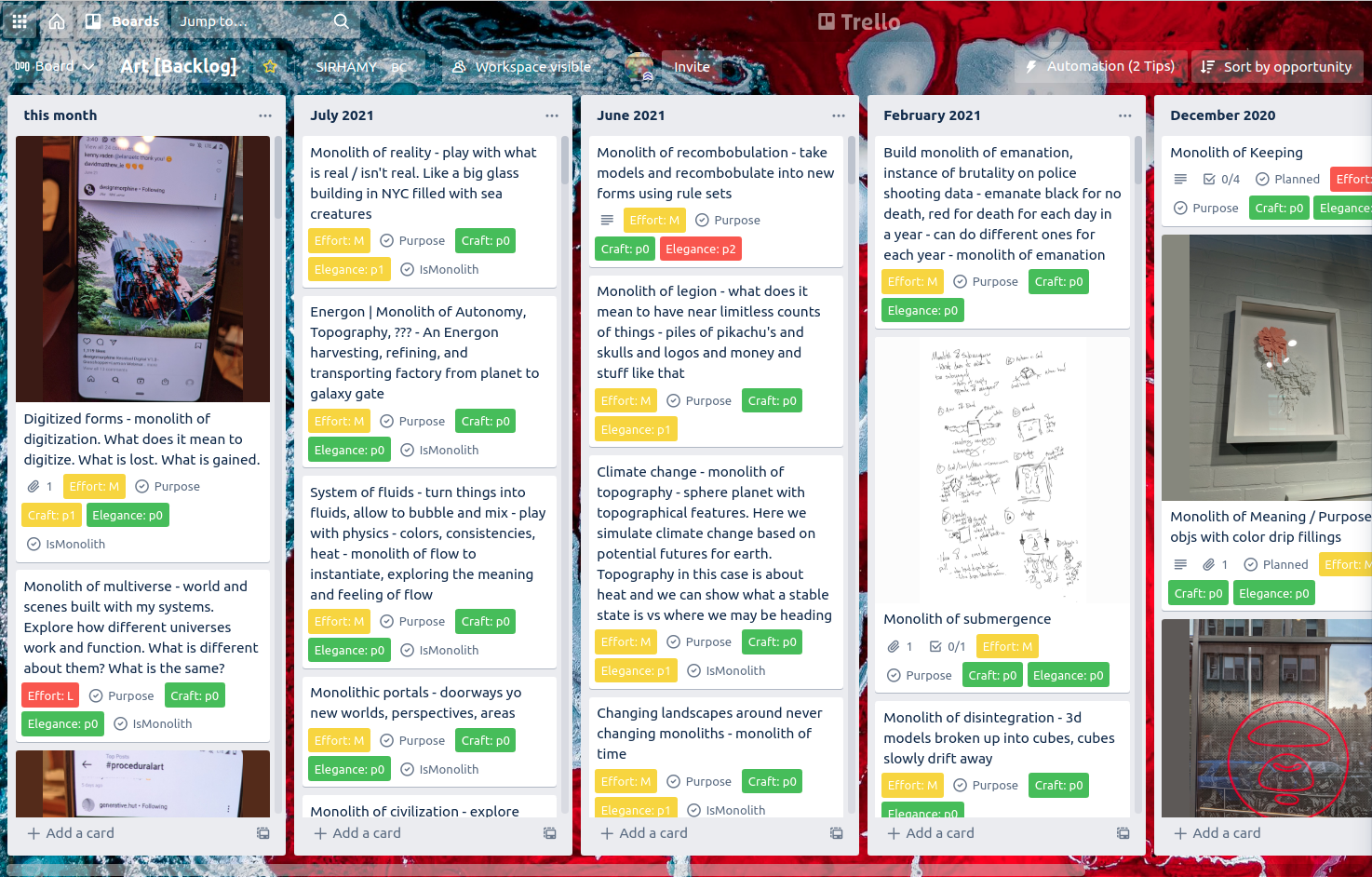Essay - Published: 2021.08.06 | backlog | projects | system |
DISCLOSURE: If you buy through affiliate links, I may earn a small commission. (disclosures)
I have lots of ideas for projects, yet I can only build some of them with the limited time, energy, and resources at my disposal.
I use a backlog to help prioritize my project ideas and decide which projects to spend my resources on and which to pass on. In this post, I'll share some principles of a good backlog and how I apply these to track and prioritize many areas of my life.
If you're reading this, you probably already have an idea of why backlogs are important and why you may need one. But I want to rehash this here to make sure we're aligned on my perspective of the problem so we can have a better understanding of the solution and implementation going forward.
To put it simply - humans are incredibly capable but also pretty dumb. To combat this, we build systems to support and empower the former while reducing the frequency and magnitude of the latter.
I think this principle holds for project ideas as well:
We can validate this is true by thinking of the prevalence of failed startups (90% of startups - investopedia) and failed investments (75% of venture-backed startups), even by incredibly skilled / successful humans.
We can't predict the future, so we go forward based on imperfect data. This leads to imperfect decisions and thus some suboptimal outcomes.
We can't always ensure we'll have good ideas - we're working off of imperfect data. But we can stack the deck in our favor to limit the amount of investment in bad ideas and increase the likelihood of picking a good idea.
A backlog can:
We can utilize this to:
It's not a perfect solution. If all your ideas are bad then even your best ideas are still going to be bad. But everyone has some good ideas given enough thought, time, and iterations so I'd guess this will still work for you.
In the average case, a backlog can help your good ideas bubble to the top and prevent wasted cycles and resources on bad ideas.
How to generate good ideas:
— Hamilton Greene (@SIRHAMY) June 13, 2021
* Generate a bunch of ideas
* Pick out the best ones
* Improve your generation system
* Repeat
The efficiency of a backlog really depends on its implementation. Two key factors are:
Good ideas going in will lead to good ideas coming out of the backlog. Looking at it another way - if you only have bad ideas, then you will only get bad ideas out of the backlog.
The other component is how you grade them. If your grading criteria doesn't effectively model a good idea, then good ideas won't bubble up from your backlog. A common saying for this phenomenon is: if you measure a fish by its ability to climb a tree, it will always fail. Thus it's important to make sure your grading criteria is actually measuring what you want it to measure.
Now there's no 'right' way to come up with good grading criteria. But I have found a set of heuristics that seems to get me in a pretty good spot over the course of several iterations:
Now let's get into my backlogs and how I use these principles to organize my own project ideas. Hopefully this will give some concrete examples of how you can build your own.
I have multiple backlogs for the different kinds of ideas I'm tracking. In practice, this roughly aligns with the kinds of projects I want to work on which in turn roughly aligns with the domains I organize my life around (see: My Reflections).
For this example, we'll focus on three of my backlogs. Each of these have external outputs and should be relatively familiar to most people so you can compare how this system leads to those outputs.
Each of these backlogs has its own grading criteria based on what I value and what I think is a good signal of potential success in each area. I then sort the lists by this criteria and choose from the best candidates when looking to start another project.
Obviously these criteria aren't perfect otherwise I would have achieved my goal of becoming Ham King of the Hamniverse already, but they're certainly better than nothing. This is where regular reflection and refactoring can be a huge help for tweaking criteria and surfacing better ideas.
Business:
A key question to ask someone to see if their problem is real:
— Hamilton Greene (@SIRHAMY) May 21, 2021
"How have you tried to solve it?"
If the answer is < 1 Google search: This isn't a problem. (at least not for them)
-Reading The Mom Test (https://t.co/9Oi1z74MM3 - affiliate).
Art:
Shares:

Art Backlog
I use Trello (referral) to store and organize my backlogs. I like it because it's:
Here's how I implement my backlogs in Trello:
With this system, finding a 'good' idea to work on next is as simple as jumping to the appropriate domain idea board and scanning the top of the lists.
So that's how I run my backlogs! I'm always looking for ways to improve so if you have your own backlogging system / any suggestions for improvement on mine I'd love to see them!
Line from the Zen of Python (https://t.co/9YJI59wkTf) I think about often:
— Hamilton Greene (@SIRHAMY) May 22, 2021
"Now is better than never.
Although never is often better than *right* now."
Has had a big influence on how I've built my productivity systems.
Capture all ideas. Ruthlessly prioritize which to execute.
In ruthless systematization,
-HAMY.OUT
The best way to support my work is to like / comment / share for the algorithm and subscribe for future updates.